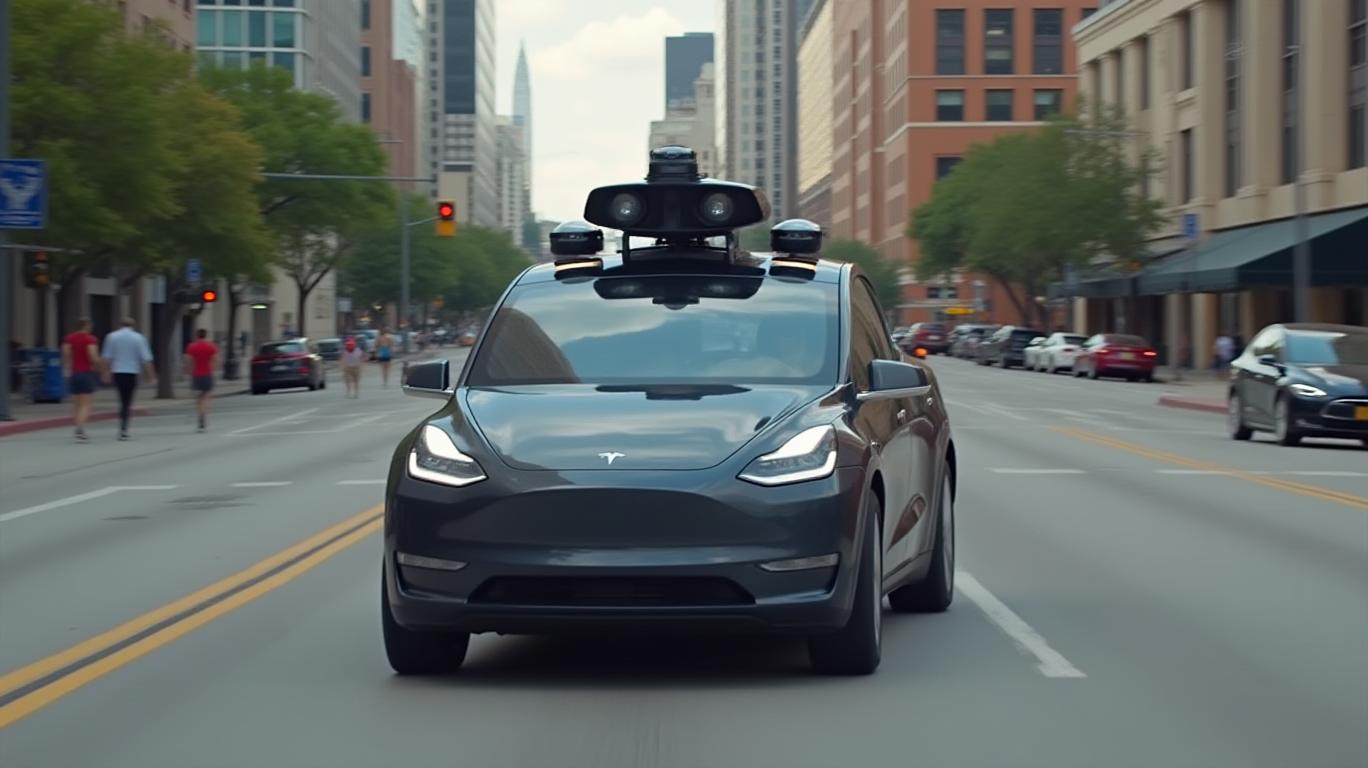Nauticus Robotics: Pioneering the Autonomous Subsea Revolution in 2025
The offshore energy and infrastructure sectors are on the cusp of a technological renaissance, and Nauticus Robotics is positioning itself at the vanguard. With its 2025 offshore season announcement, the company has unveiled a bold strategy to transform subsea operations through autonomy, strategic acquisitions, and advanced robotics. This pivot could redefine the industry’s reliance on traditional systems and unlock significant growth opportunities—if execution aligns with ambition.
Operational Expansion: Merging Autonomy with Tradition
At the heart of Nauticus’ 2025 plan is the integration of its autonomous Aquanaut vehicles with conventional remotely operated vehicles (ROVs). By deploying two ROVs alongside Aquanauts in the Gulf Coast—a region critical to oil and gas drilling and environmental monitoring—the company aims to demonstrate a transformative model of collaboration. This pairing, enabled by Nauticus’ proprietary ToolKITT software, reduces reliance on tethered systems, cuts operational costs, and enhances safety by minimizing human intervention.
The Gulf Coast focus is strategic: a 120-day minimum contract for one ROV, with options for extensions, provides immediate revenue stability. Meanwhile, the redirected New England ROV—initially aimed at offshore wind—now supports Gulf Coast operations, signaling a prioritization of markets with faster revenue potential.
Strategic Acquisitions: SeaTrepid’s Role in Scaling Up
The acquisition of SeaTrepid International in Q1 2025 is Nauticus’ most critical move. SeaTrepid’s established Gulf Coast operations, ROV fleet, and customer relationships offer an instant boost to Nauticus’ addressable market. By retrofitting SeaTrepid’s ROVs with ToolKITT, Nauticus aims to create a “subsea robotic collaboration solution” that could multiply its revenue ninefold in 2025 compared to 2024’s $1.8 million.
The integration also brings logistical advantages. SeaTrepid’s Louisiana facility reduces mobilization costs for Gulf Coast projects, while shared leadership roles ensure continuity. This synergy is pivotal: Nauticus’ 2024 operating expenses dropped by $36.8 million year-over-year, hinting at cost discipline that could underpin profitability.
Technology: The Olympic Arm and Beyond
Nauticus’ product roadmap underscores its ambition to lead in subsea autonomy. The Olympic Arm manipulator system, set for late-2025 deployment, represents a breakthrough—it will enable Aquanaut vehicles to perform tasks like inspection and repair autonomously for the first time. Combined with advancements in AI-driven decision-making and sensor technology, this innovation positions Aquanaut as a versatile tool for both energy and government clients.
The company’s focus on reducing greenhouse gas emissions and operational costs aligns with global decarbonization trends. For instance, autonomous systems could cut emissions by minimizing human crews and optimizing routes, making them attractive to environmentally conscious industries like offshore wind and government infrastructure projects.
Market Diversification: Beyond Energy
While the Gulf Coast and oil/gas sector anchor Nauticus’ near-term strategy, the company is also expanding into adjacent markets. Its government sector alliance—secured in 2024—offers long-term contract stability, a contrast to seasonal commercial work. Meanwhile, offshore wind remains a target, with Nauticus retaining interest in future projects despite redirecting its New England ROV.
Financial Outlook: Growth vs. Risk
Nauticus’ 2025 targets are audacious. The projected ~$16.2 million in revenue (9x 2024’s figure) hinges on SeaTrepid’s integration and new contracts. The $19.4 million raised via an At-The-Market offering in Q1 2025 shores up liquidity, but the company’s year-end 2024 cash balance of just $1.2 million underscores its reliance on capital markets.
Risks and Challenges
The path is fraught with hurdles. Technological delays—such as the Olympic Arm’s certification or ToolKITT’s adoption—could strain resources. Regulatory scrutiny over restated 2024 financials and debt obligations (including warrants and convertible debentures) add financial risks. Competitors like Oceaneering International and Subsea 7 are also advancing autonomous solutions, intensifying competition.
Conclusion: A Pivotal Year for Subsea Innovation
Nauticus Robotics’ 2025 season is a high-stakes gamble with the potential to redefine the subsea robotics industry. Its strategy—bolstered by the SeaTrepid acquisition, ToolKITT software, and Olympic Arm—is backed by a clear financial roadmap: a ninefold revenue jump, operational efficiency gains, and milestones like autonomous manipulation by year-end.
Yet success hinges on execution. If Nauticus can deliver on its Gulf Coast contracts, scale its autonomy solutions, and navigate regulatory and technical risks, it could capture a leading position in a market expected to grow at 6% annually through 2030. Investors should watch closely for signs of customer adoption (e.g., extended ROV contracts beyond 120 days) and financial milestones like positive cash flow.
For now, the stakes are clear: Nauticus is betting its future on autonomy. If it succeeds, the subsea industry will never look back.










